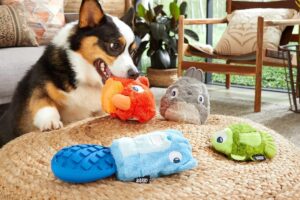Heated Dog Kennel

Heated Dog Kennel:- If you’re a dog lover, you probably enjoy having your dogs inside with you as much as possible. The thought of keeping them outside during cold winters or hot summers likely seems unappealing. However, there may be times when having a safe and comfortable outdoor space for your dogs could be beneficial. The key to achieving this without compromising their well-being lies in using insulated Heated Dog Kennel and runs.
One situation where an outdoor setup might be ideal is when you’re not at home. Whether you’re at work or running errands, leaving your dogs alone inside the house might not be the best option for their comfort and safety.

Additionally, if you have guests over and your dogs aren’t well-trained around visitors, you might need to find an alternative space for them. Keeping them in a basement or a small room could lead to issues, especially if your dog tends to bark or chew on things. Another scenario to consider is if someone in your household or a guest has allergies to dogs. If rehoming your dogs isn’t an option, providing an outdoor space could be the best solution.
When to Use a Heated Dog Kennel?
Dog houses are a practical choice for many pet owners. If you have a fenced yard and spend a lot of time away from home, allowing your dog to stay outside might be better than keeping them confined in a crate.
In the warmer months, it’s simple to keep your dog comfortable outdoors with plenty of shade and fresh water. However, during winter, you might need to consider heating your dog’s house to keep your pet warm.
So, when should you use a heated dog house? Not every dog requires one. If your dog only goes outside for brief walks in the snow and isn’t left out for extended periods, a heated house might not be necessary.
Additionally, if you have an arctic breed like the Norwegian Elkhound, Bernese Mountain Dog, Great Pyrenees, Saint Bernard, Shiba Inu, or Siberian Husky, they are typically well-suited to cold weather and might not need extra heat. These breeds thrive in chilly conditions and can handle the cold better than most.
If you live in an area with extremely cold weather, an insulated dog house can be a lifesaver, even for breeds that are generally more tolerant of the cold.
For dog breeds that struggle in cold temperatures, such as Dachshunds, Chihuahuas, Basset Hounds, Greyhounds, Doberman Pinschers, Chinese Cresteds, Whippets, Yorkshire Terriers, Pit Bulls, and French Bulldogs, a heated dog house is essential. Keeping these breeds warm is crucial for their health and comfort.
If you need to keep your furry friend outdoors during winter, investing in a heated dog house is an excellent way to ensure they stay safe, warm, and content.

Should Your Dog Have a Heated Dog Kennel?
Some dog breeds, like Huskies and Malamutes, are well-equipped to handle cold weather, having been bred to work in frigid climates. Similarly, dogs with thick or double-layered coats often fare well in cooler temperatures. However, breeds with thin or single-layer coats, or those with shorter legs that bring their bodies closer to the ground, can be much more susceptible to the cold.
Ensuring your dog’s comfort during winter is crucial, and they should always have a safe, dry, and warm place to shelter. While nothing beats the comfort and warmth of your home (and the chance for extra cuddles), a heated dog house can be a great option if your dog spends time outdoors in cold weather. It can serve both as a refuge from harsh winter conditions and a cozy playhouse for winter fun.
When built correctly, a heated dog house can:
– Shield your dog from wind, rain, snow, and other severe winter elements.
– Provide a warm retreat during potty breaks or exercise sessions outside.
– Help your dog enjoy more outdoor time, potentially alleviating some effects of seasonal affective disorder.
Add a Heating Pad
Consider adding a heating pad to keep your doghouse cozy. Here’s a simple, DIY solution: Fill a sock with uncooked rice, secure it with a knot or zip tie, and microwave it for a few minutes. Place the warm sock in the doghouse for a short-term heat boost that doesn’t require electricity. For a more consistent heat source, you might use a heat lamp mounted to the ceiling or a heating pad on the floor to evenly distribute warmth and keep your dog comfortable.

Wind Protection
To maintain a warm and comfortable temperature inside the doghouse or kennel, it’s crucial to protect it from the wind. Wind can quickly drain heat from the space, making it colder for your dog. By windproofing the doghouse, you prevent the cold air from pulling away the warmth generated by your dog’s body heat, ensuring a snug environment.
How to Choose the Perfect Dog House
Selecting the right dog house involves thoughtful consideration of size, weather resistance, and placement. Here’s a guide to finding the ideal home for your furry friend and making the most of your available space.
Pick the Right Size
The size of the dog house is essential for your pet’s comfort. A house that’s too small will restrict your dog’s movement, while one that’s too large may fail to retain body heat.
To find the perfect size, measure your dog’s height, weight, and length. Add 2.5 to 4 inches (7-10 cm) to these dimensions to ensure your dog can stand up and turn around comfortably.
Plan for Growth
Puppies grow quickly, so consider buying a slightly larger dog house to accommodate their future size. You can use dividers or soft bedding to create a snug space that feels secure while they’re still growing.
Ensure Weather Resistance
Choose a dog house made from durable, weather-resistant materials. Opt for designs with a sloped, waterproof roof to protect against rain and an elevated floor to keep your dog off the cold ground.
Find the Best Location
Place the dog house in a spot that’s shielded from strong winds and flooding. Ideally, position it against an exterior wall of your home, where it can benefit from added warmth, especially if the wall is well-insulated.
Also Read:-




